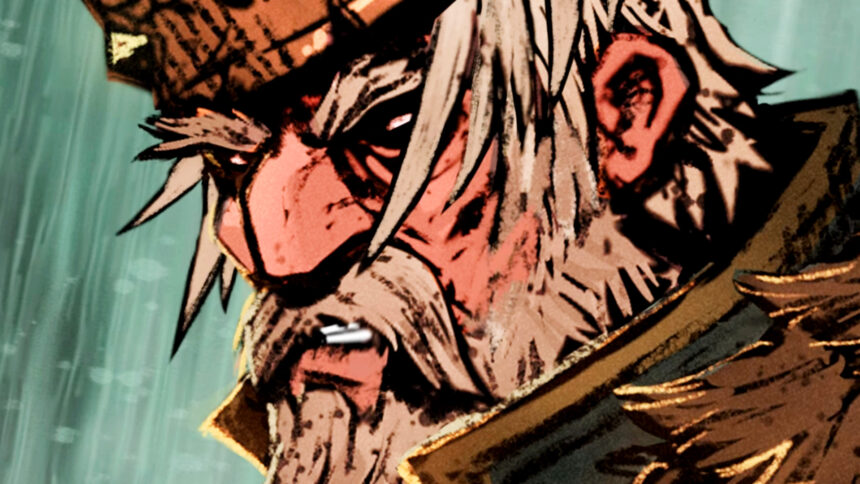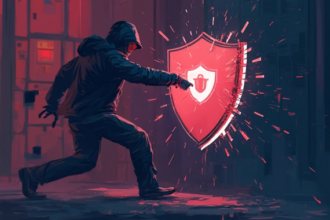Following the massive success of Hades in 2020, many games have attempted to follow in its great footsteps, with even Supergiant breaking with the tradition of new ideas for sequels. oathon the other hand, takes the basic concepts and structure of one of the best roguelikes of recent years and lovingly adapts it to the fantasy world of King Arthur’s Camelot, creating something that’s both comfortingly familiar and unique enough to justify its existence. At Gamescom 2024, I sat down with Windwalk Games’ game director Sam Leonard and art director Sean Evans to check out the game and left wanting to play more.
On the surface, Sworn ticks all the important boxes you’d expect from a Hades-like game: you’ll have to make your way through four biomes as you take on the corrupt King Arthur and the Knights of the Round Table. Your character has basic attacks, special attacks, spell casting and dodge, which are augmented by a range of abilities bestowed by the fairy kings. But aside from how perfectly the world of Camelot fits into this roguelike structure, what really sets Sworn apart is the level of depth on offer.

Firstly, Sworn lets you choose from four different characters – Vigilante, Rook, Spectre and Monk – and each character has four base weapons and four different spells to choose from, allowing for a huge number of combinations even before you go on the run and acquire all of the upgrades that define your build.
I went for Specter. Among her weapons are the bolt-firing Orrery and the wide-sweeping Scythe, the latter of which immediately caught my eye. In terms of spells, there’s a variety of options, including beam attacks and short-range teleports that explode on movement, but I went for the Spirit Guardian, which can be summoned to float around her and automatically fire attacks at nearby enemies. There’s a fantastic amount of variety here, and each option feels well-thought-out.
Every weapon has its own branching upgrade tree, and the good news is that each one is shaped to suit the weapon it’s aimed at. As you unlock the various nodes, each one gradually increases your potential, but you’ll encounter two “major” nodes that allow you to choose between two more powerful upgrades. For the Scythe, you can choose to save up souls over time, or gain them by attacking enemies. You then get to decide how to spend them: you can choose to spend all your souls in a special attack, restoring you in proportion to how much you’ve collected, or deal bonus damage based on the souls you’ve collected. The bonus damage has the benefit of not being consumed if the attack kills the target.

As you progress through the regions, you’ll encounter various fairy kings who will bestow their blessings. In the demo, I counted eight kings in total, at least to start with. Each has a theme. King Oberon offers a rage bonus and the ability to summon a damaging whirlwind. Banshee Cliona can weaken enemies or fire additional soul missiles when attacking. Frozen Witch Veila inflicts chill and freezing effects. As someone who likes to deal big damage with critical strikes, I’m partial to the boon of Hand of Fate, Lu. Each fairy king also has a companion who accompanies them in battle.
You start off in a forest but the environments get more and more interesting as you progress. The second zone, Cornwall Township, is full of Skaven-style rat beasts and muddy puddles that make it difficult to run around safely. Beyond that is Deep Harbor, which has a creepier, more eerie atmosphere and features monster designs inspired by Lovecraft’s Cthulhu Mythos.
Here, Leonard points out that the team is experimenting with placing enemies in negative space, which is something I particularly like. In practice, this is reflected in the platforms separated by water that can only be crossed using dashing or traversal skills, and the enemies that live in that water. It’s a design decision that gives each zone a unique feel, and it’s further accentuated in the final area, Camelot Castle. Once you get there, even the regular enemies feel like mini-bosses that you need to watch out for, each boasting multiple attack patterns.

Like Hades, where Sworn’s combat really shines are in the boss battles, which see you face off against Gawain, one of King Arthur’s leading knights. The visual design of these boss fights is fantastic, with some clever attacks designed to adapt if you’re playing co-op, such as a series of tracking bullets that each lock on to a different player if you tackle Gawain as a team.
Between runs, there are more ways to gradually get stronger, in addition to the aforementioned weapon tuning. There are five more trees to pursue: Life, War, Devotion, Treasure and Wealth. Each of them provides permanent upgrades to everything from your starting stats to the chances of encountering rarer boons.
Sworn is so similar to Hades that it felt right at home from the moment I started, but the setting, the ability to play cooperatively with up to three additional friends, and the depth and variety it offers have me super excited to play. A lot of careful thought and love has clearly gone into how every aspect works, and as someone who is craving a new action roguelike, Sworn has already got me hooked. I’ve continued playing well beyond my original reservation time, and would have stayed longer if I didn’t have other reservations.

Sworn is scheduled to be released in 2024. If you want to try it for yourself, you can add it to your wishlist on Steam to be notified when it’s released, or be sure to check out the best fantasy games of 2024 and the best action games you can play on PC right now.









